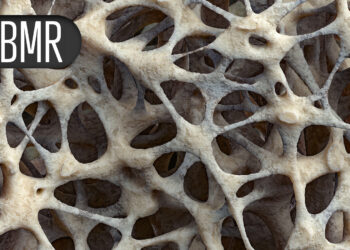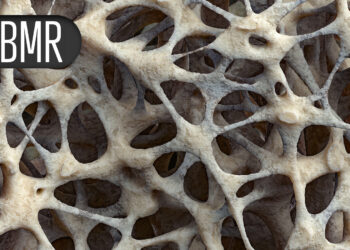GLPG5101, a second-generation anti-CD19/4-1BB CAR T-cell therapy, shows high complete response rates in the treatment of high-risk indolent relapsed/refractory (r/r) non-Hodgkin lymphoma, with a notably shortened vein-to-vein time, or time from leukapheresis (the separation and collection of cells) to infusion, compared with other CAR T products.
“The short vein-to-vein time of GLPG5101 eliminated the need for bridging therapy and the dropout rate was low, which potentially facilitated treatment of patients who would not otherwise be able to receive CAR T-cell therapy,” said first author Maria T. Kuipers, MD, PhD, of the Amsterdam UMC, University of Amsterdam, Amsterdam, the Netherlands, in presenting the findings at 18th International Conference on Malignant Lymphoma (ICML) 2025.
Though indolent cancers grow slowly by nature, that slow growth can occur in early or advanced cancers, including r/r non-Hodgkin lymphoma, and in such cases, remission times can become shorter with each subsequent line of therapy, Kuipers explained.
CD19-targeted CAR T-cell therapies have shown favorable outcomes in r/r non-Hodgkin lymphoma, and in the ongoing phase 1/2 ATALANTA trial, Kuipers and her colleagues previously reported that GLPG5101 had high complete response (CR) and molecular residual disease (MRD) negativity among those patients who were heavily pretreated.
By utilizing a decentralized platform with GLPG5101, the vein-to-vein time, which can take weeks in some situations, was achieved in 91.5% (43 of 47 patients) in the ATALANTA trial in just 7 days.
At ICML, Kuipers reported the results from the cohort of patients from the study who had indolent r/r non-Hodgkin lymphoma, specifically those with follicular lymphoma (n = 27) and marginal zone lymphoma (MZL; n = 5).
Of the patients, 32 of the 34 were infused after leukapheresis, and 30 of those received a fresh product.
Importantly, 28 of the 30 patients (93%) had a 7-day vein-to-vein time and none required bridging therapy. The remaining two patients received a cryopreserved product in a 13-day vein-to-vein time.
The patients, who had a median age of 64 years, had a median range of prior systemic lines of therapy of three, ranging from two to as many as six, and 31% had a prior allogeneic stem cell transplant.
Nineteen of the 32 patients (59%) had experienced a progression of disease within 24 months from starting their first-line therapy.
Among those with follicular lymphoma, 16 of 26 (62%) had high-risk follicular lymphoma international prognostic index scores, while none of the patients with MZL had the high-risk scores.
As of month 9, of 13 patients who were evaluable, all had persisting CAR T cells, and CAR T cells were detected for up to 21 months.
The responses were durable — with a median follow-up of 12.3 months, no disease progression was observed, and all responses were complete responses.
Overall, the objective response rate (ORR) and CR rate (CRR) per investigator’s assessment were 97% for each.
Among 27 patients in the follicular lymphoma group, the ORR and CRR were 96% each (26 of 27) and the corresponding rates in the five patients with MZL were 100%.
In addition, 31 of the 32 patients who were infused (97%) had a CR.
And all eight patients who were evaluable for MRD were MRD-negative at the time of CR.
The 12-month progression-free survival rate overall was 97%, which Kuipers said is notably high in relation to published studies of patients with indolent non-Hodgkin lymphoma treated with anti-CD19 CAR T therapies, which range from 67%, 80%, and 83% in the ELARA (tisagenlecleucel), ZUMA 5 (axicabtagene ciloleucel), and TRANSCEND (lisocabtagene maraleucel) trials.
Safety Outcomes
B-cell aplasia occurred in 26 of 34 patients (77%) on day 7; 30/30 (100%) had occurrence on day 28 and 26 of 27 (96%) at Week 14.
In terms of safety, the most common grade 3 or higher adverse events up to 14 weeks post-infusion were hematologic.
Cytokine release syndrome occurred in 11 of 32 (34%) patients, with no cases that were grade 3 or higher, and immune effector cell-associated neurotoxicity syndrome in 4 of 32 (13%) patients, with one case being grade 3 or higher.
Prolonged grade 3 or higher cytopenia occurred in 11 (34%) patients 30 days post-infusion, in 8 of 29 (28%) at 60 days, and 9 of 28 (32%) at 90 days post-infusion.
There were no deaths reported as of the last assessment, at a median follow-up of 9.0 months, ranging from 1 to 26 months.
Further commenting to Medscape Medical News, Kuipers noted that, “although there are no head-to-head comparisons, CAR T-cell therapy offers the advantage of a single treatment, and progression-free survival appears better with this therapy, however, this benefit may be associated with a higher short-term toxicity rate,” she explained.
Kuipers noted that bispecific antibodies have the added advantage of being able to start immediately, which is particularly important for patients with progressive disease, and toxicity rates are lower.
“With GLPG5101, we have so far observed a very manageable safety profile,” she added.
“The short vein-to-vein time eliminated the need for bridging therapy, and the dropout rate was low (5.9%), which potentially facilitated treatment of patients who would not otherwise be able to receive CAR T-cell therapy,” she concluded.
‘Real signal’ of Benefit in Indolent NHL Is Clear
Commenting on the study, Samuel Yamshon, MD, director, cellular therapy service, lymphoma program, at the Weill Cornell Medical Center, in New York City, agreed that the study was notable in “consistently demonstrating responses from the GLPG5101 product in indolent lymphoma, and many of these responses appear to be durable.”
“This was accomplished without bridging and with a rapid turnaround time, which is a potentially exciting development for patients with aggressive disease,” he said.
While patients with indolent lymphomas with high risk disease features, such as those who relapse within 24 months of treatment, can be challenging to treat with traditional therapies, “CAR T-cell therapies so far appear to abrogate this risk somewhat — both the ZUMA-5 study of axi-cel and the TRANSCEND FL study of liso-cel demonstrated similar efficacy in high risk subgroups,” he explained.
“This suggests that this efficacy of the GLPG5101 product in these high-risk subpopulations of indolent non-Hodgkin lymphoma is a real signal.”
Regarding the vein-to-vein benefit, Yamshon noted that the turnaround with GLPG101 “is definitely faster than what’s currently available on the market — currently, the quickest turnaround time is with axi-cel, which in my experience is about 2 weeks.”
However, it’s not clear yet how much this really matters, especially in follicular and MZL, he cautioned.
“A short vein-to-vein time can cut both ways: Nobody on this trial received bridging therapy, which we sometimes actually like to do to debulk patients’ lymphoma ahead of CAR T,” Yamshon said.
“Trials without bridging therapy can sometimes inadvertently select for more slowly growing lymphomas where we are comfortable proceeding without bridging therapy.”
Nevertheless, “having the flexibility of a quick turnaround is certainly exciting,” he said.
Limitations include that the follow-up remains relatively short for some of the patients, Yamshon noted.
“Especially in indolent lymphomas, the real question is not how many patients respond, but how long these responses last. It will remain to be seen how the durability compares to the other approved products in indolent non-Hodgkin lymphoma.”
This study was funded by Galapagos. Yamshon reported no relationship with Galapagos. He reported ties with BMS (liso-cel) and Kite Pharma (axi-cel) as well as Kite Genmab, and AbbVie.
Source link : https://www.medscape.com/viewarticle/nhl-2nd-generation-car-t-shows-benefit-2025a1000gn0?src=rss
Author :
Publish date : 2025-06-23 10:51:00
Copyright for syndicated content belongs to the linked Source.









